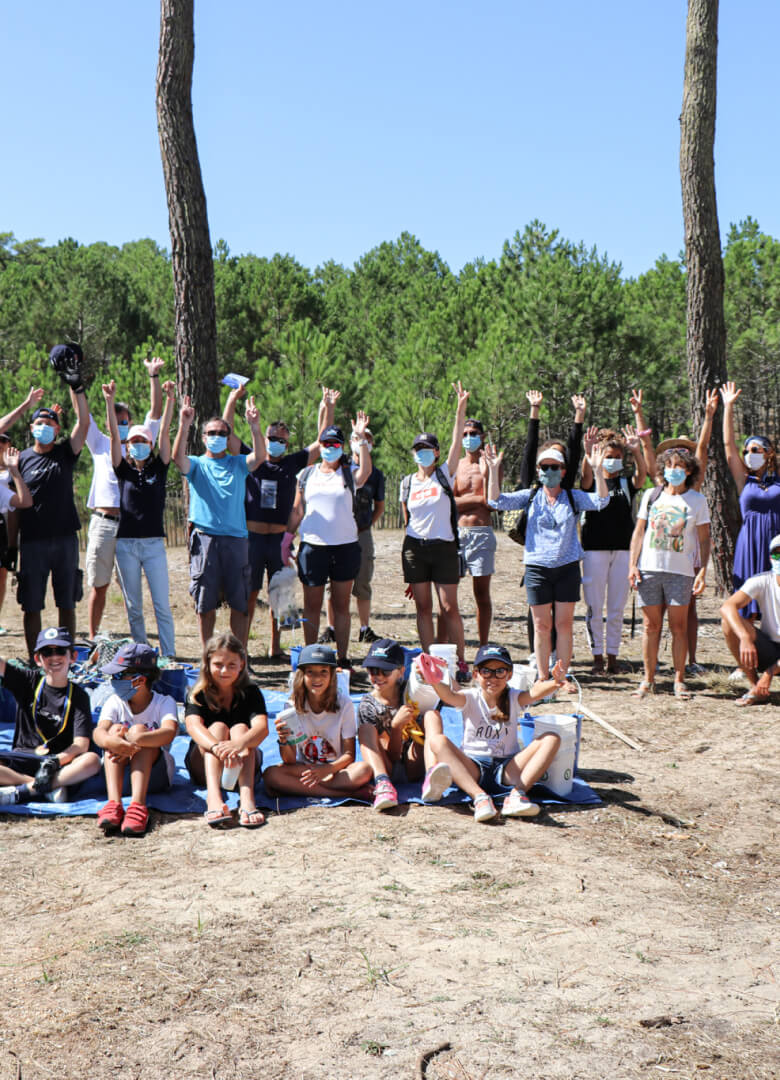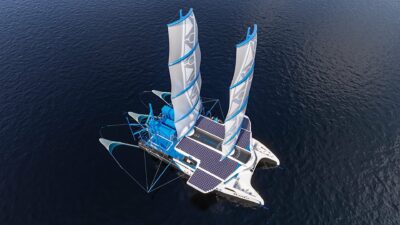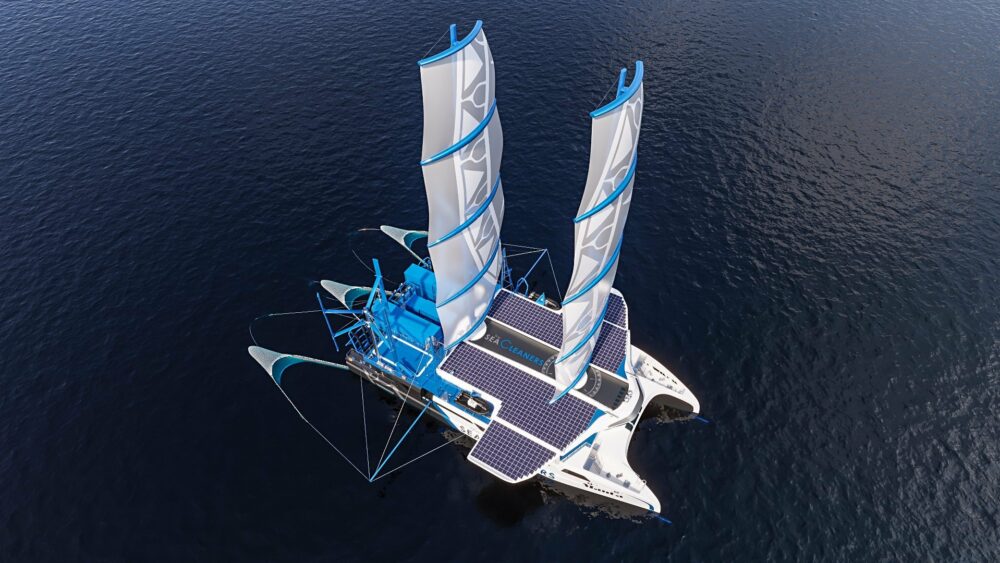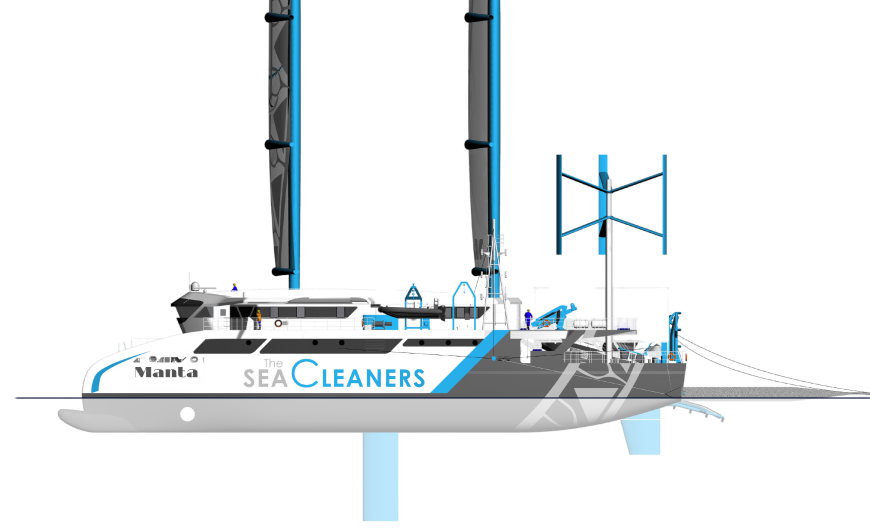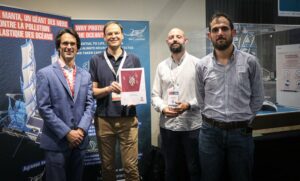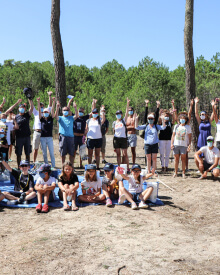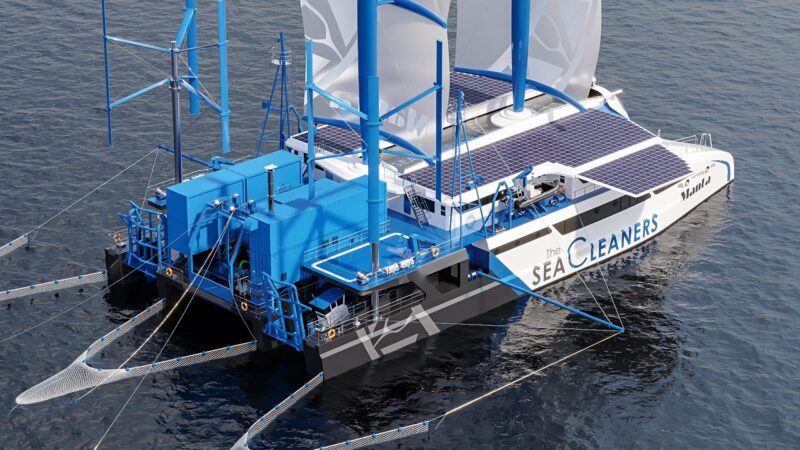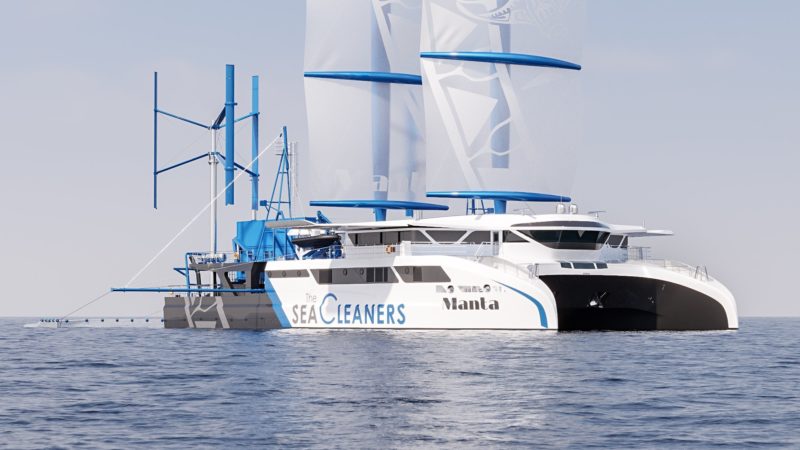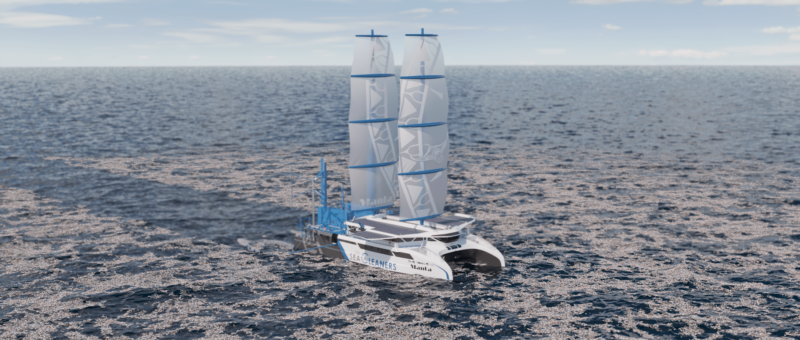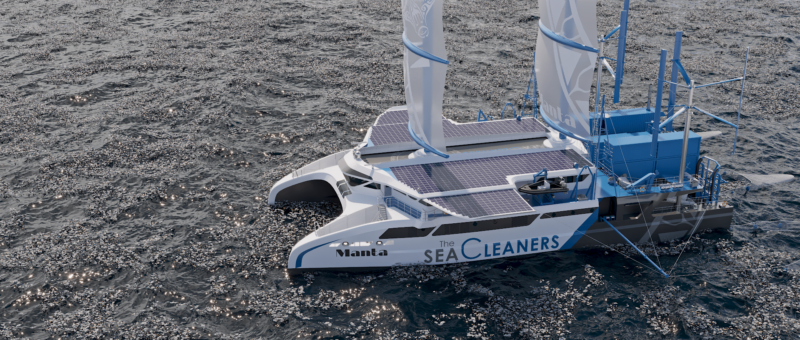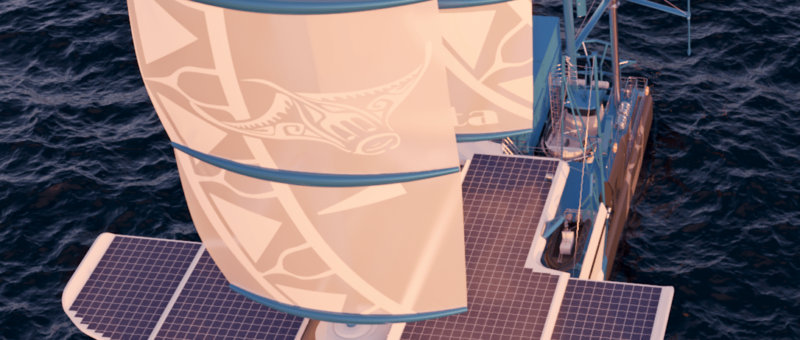Rising up to the challenge
Under the banner of MANTA INNOVATION, the technical team develops a range of groundbreaking solutions against plastic pollution among which a bold and original project: the Manta. This first-of-a-kind processing ship is designed to collect, treat and repurpose large volumes of floating plastic debris present in highly polluted waters, along the coasts, in estuaries and in the mouths of large rivers.
In 2022, Bureau Veritas, the leading ship classification company, awarded the Manta with “Approval In Principle” certification.
The Manta is now fit to be built.

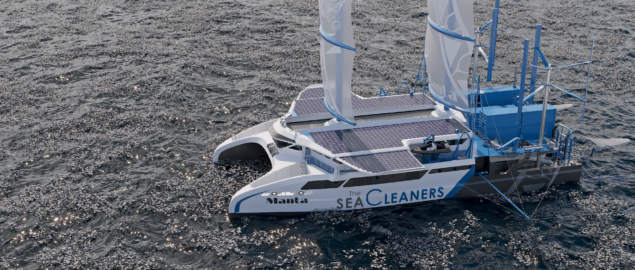
The Manta, a giant of the seas against pollution
Collection systems
Objective of 5 to 10,000 tonnes per year.
The Manta extracts both floating macro-waste and smaller debris from 10 millimetres upwards and up to one metre deep.
Depending on the density and closeness of the layers of waste, the Manta can collect between 1 to 3 tonnes of waste per hour, with the objective of collecting 5 to 10,000 tonnes per year. It can operate for up to 20 hours a day, 7 days a week.
The Manta is equipped with four complementary collection systems:
- Waste-collecting conveyors, which bring the waste on board.
- Three floatable collection systems, which have a collection span of 66 metres, and pick up surface waste.
- Two small, multi-purpose collection boats, or “Mobulas,” which can pick up both micro- and macro-plastic waste from the shallowest and narrowest parts of the ocean that the Manta can’t get to.
- Two lateral cranes, which pull out the largest pieces of floating debris from the water.
Waste Recycling
90% of waste processed at sea.
The Manta is the first self-sufficient workboat capable of processing 90 to 95% of the collected plastic waste whilst at sea. This is all thanks an innovative, eco-friendly system, which consists of:
- A waste sorting unit: this manually separates the waste, according to its type, and packages it in a way that boosts its energy efficiency.
- A waste-to-energy conversion unit: this converts the collected waste into electricity which, in turn, powers all of the Manta’s electrical equipment. This eco-friendly method emits hardly any CO2 or pollutants into the air.
Nothing is discarded during this process. All the collected waste is converted into useful components, in line with the principles of a circular economy.
Storage Capacities
200 m3 of storage for of all types of waste.
The Manta’s primary purpose is converting waste into energy, as opposed to storing it, as this increases the ship’s weight and energy consumption.
The waste that isn’t immediately repurposed is packaged into big bags and stored on the deck or the hulls, before it is eventually converted into energy.
The storage capacity for the plastic waste is 140 m3 (around 50 tonnes). In addition to this, there are two 33 m3 containers: one for drift nets and one for dangerous waste.
In rare cases where the waste isn’t converted into energy, it is entrusted to local waste treatment or recycling plants during stopovers.
Eco-conception
100% eco-conscious.
We have carried out a complete Life Cycle Assessment (LCA) of the Manta: we assessed the environmental impact associated with all the stages of the boat's life cycle. This includes everything from the first stage of the Manta’s assembly (the extraction of necessary resources), all the way to the last stage of its life cycle. The LCA enabled us to determine the highest quality, most eco-friendly, and most recyclable materials, as well as those with the lowest carbon footprint.
As a result, the hulls of the Manta will be made of 95% recyclable steel and the superstructure, with a cabin and wheelhouse, will be made of 100% recyclable aluminium.
This assessment also made it possible to find the right balance between the boat’s materials and its weight, ensuring that the Manta is as energy-efficient as possible.
Autonomy of action
Target: 50 to 75% energy autonomy.
The Manta can operate without using fossil fuels between 50% to 75% of the time, making it the first workboat to have such a high level of energy self-sufficiency.
In order to minimise its energy consumption and carbon footprint, the sails and riggings are its preferred means of propulsion.
Due to its high energy independence, the boat also has an almost unlimited range, which allows it to rapidly reach intervention zones all over the world. These are typically mouths and estuaries of great rivers where the layers of waste are concentrated, or areas hit by climate hazards and/or natural disasters.
Its embedded clean shipping technologies make the Manta a model of "green ship" and "smart ship".
Green energy
500 kW of clean energy.
The Manta has several pieces of on-board equipment designed to generate renewable energy, which enables it to minimise its environmental footprint and consumption of fossil fuels, and simultaneously increase its energy self-sufficiency:
Two wind turbines (100kW)
Almost 500m² of photovoltaic solar panels (100 kWp)
Two hydrogenerators (100 kW) by means of a propeller driven by the sail-powered forward movement of the boat
The waste-to-energy conversion unit (100 kW)
To comply with regulatory requirements, the Manta has 2 diesel motors on-board in order to facilitate low-speed manoeuvres and to guarantee the safety of the crew.
Hybrid propulsion
Top speed of 12+ knots.
The Manta is fitted with a hybrid propulsion system, combining automated rigging from the DynaRig model, and propeller propulsion units driven by electric motors.
The electricity needed to power the rigging and electric motors is supplied by the on-board equipment designed to generate renewable energy, the waste-to-energy conversion unit and conventional generators.
Sailing is the Manta’s preferred mode of transport. The hybrid propulsion system allows manoeuvring at low speed for sensitive operations (such as the entry to and exit from ports), as well as waste collections, which are carried out at 2 or 3 knots, all whilst maintaining a reduced ecological footprint.
Agile and energy-efficient, the Manta can reach a top speed of over 12 knots.
Scientific laboratories
10 scientists on-board.
The Manta is a place of work for institutional research teams from all over the world, with the purpose of advancing the knowledge of the scientific community in the fields of geolocation, quantification and the characterisation of plastic waste.
6 to 10 scientists at a time can come aboard the Manta for on-board assignments. Whilst at sea, they’ll have oceanographic equipment and four research spaces at their disposal: two research labs, a study room and an analysis room.
The data collected will be completely accessible via Open data.
Educational platform
60 m² conference space for up to 80 people.
Also hailed as an ambassador boat for the protection and decontamination of oceans, the Manta is open to the public during on-land stopovers to foster individual and collective action in support of marine conservation.
The 60 m² conference room on-board the Manta can accommodate up to 80 people, providing a space to raise awareness about marine conservation amongst the general public.
The Manta also serves as a platform that presents a tangible example of effective technological solutions that, in turn, aid in the development of circular economy systems at a local level. Economic stakeholders and local authorities will have the opportunity to visit the Manta and discover its waste repurposing unit, the Mobulas, its collection systems, its scientific labs, etc.
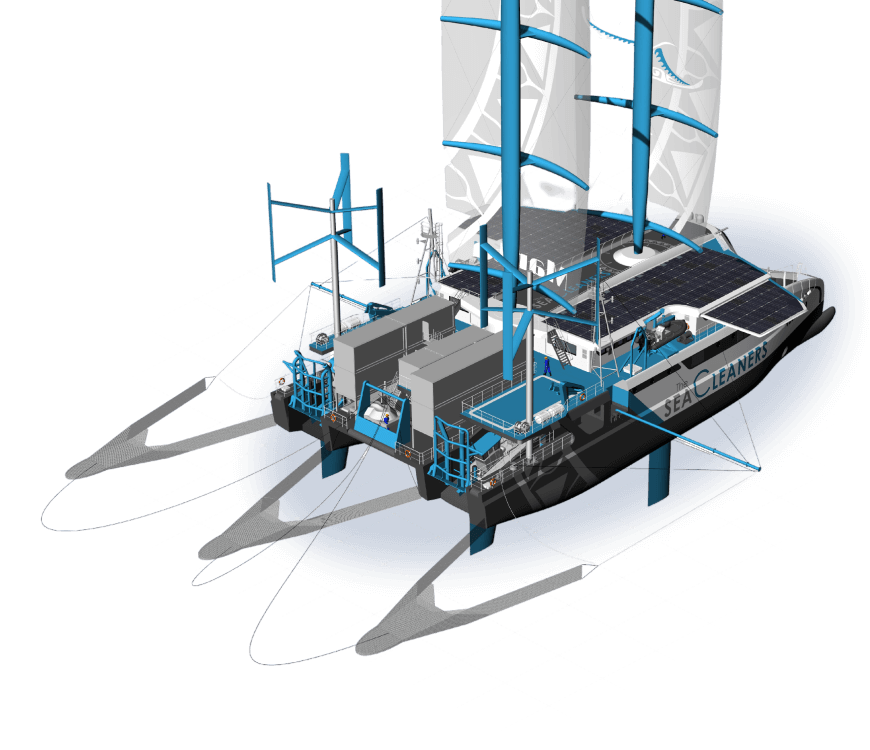
Deck 1
Batteries
Electric motors of the propulsion units
Waste water treatment
Freshwater production
Technical premises
Rudders
Propellers (submerged)
_ _ _ _
Dimensions of the Manta:
Height: 62 m
Width: 26 m (66 m with outriggers)
Length: 56.5 m
Weight: 1,800 tons
Deck 2
Rafts for MOBULAs 8 and 10
Storage area for navigational waste
Food storage area and cold storage
Sports hall
Technical premises
Generating sets
Deck 3
Collectors
Wind turbines
Sorting and preparation plant for collected waste
Waste-to-energy conversion unit
Conference room
Analysis office and scientific laboratories
Hydro-generators (submerged)
Waste storage area
Storage containers for hazardous waste and large waste (drift nets)
Gantries for outriggers and haling floatable collections systems
Infirmary
Technical premises
Deck 4
Wheelhouse
Gantries for side outriggers and floatable collections systems
Outdoor waste storage area
Rescue boat
Diving boat
Cranes
Cabins
Kitchen
Cafeteria & Mess
Deck 5
Automated rigging
Fixed solar panels
Retractable wings equipped with solar panels
Sundeck
Acting where the need is
The first missions of the Manta should take place in South-East Asia.
River
Country
Number

Launch of the Manta in 2025!
The Manta Boat : from an utopia to a giant of the seas
Technical Consortium
The result of 3 years of Research and Development, the Manta mobilized a technical consortium of 17 industrial partners and 5 research laboratories for its design, including world leaders in their field. Since 2018, 60 engineers, technicians and researchers have worked more than 45,000 hours to bring the Manta’s vision to fruition. Each of the ship’s “technological bricks” is the result of a synergy of unique know-how.
In 2022, Bureau Veritas, a leader in ship classification, awarded the Manta “Approval In Principle” certification. The Manta is now fit to be built.

Why remove floating marine waste?
Because action speaks louder than words
The Manta is designed to collect floating marine debris in zones where it collects in large volumes, before it disperses and permanently enters the marine ecosystem. A virtuous circle will ensue: by restoring the ecosystems and local economies damaged by plastic pollution it will demonstrate fast, visible results which will in turn increase awareness, mobilise public authorities, private companies, communities and individuals.
Because the capabilities exist and need to be shared
The Manta will be an ambassador vessel, showcasing innovative, efficient, viable and easily replicated technologies to collect and repurpose plastic waste. The capabilities on board will be made available to local stakeholders so that they can in turn contribute to the circular economy in their own country.
Because several activities can be located in one place
The Manta will be a pioneering scientific platform for observation and research into plastic pollution, as well as a learning centre to raise awareness among the general public and communities directly affected by the problem.
To know more : read the articleWhy do we need to collect plastic waste ?
